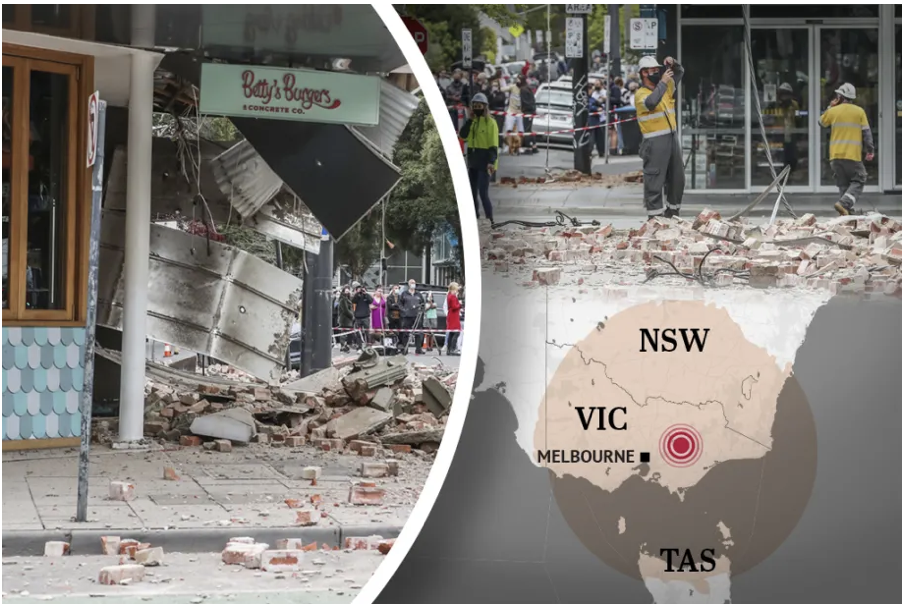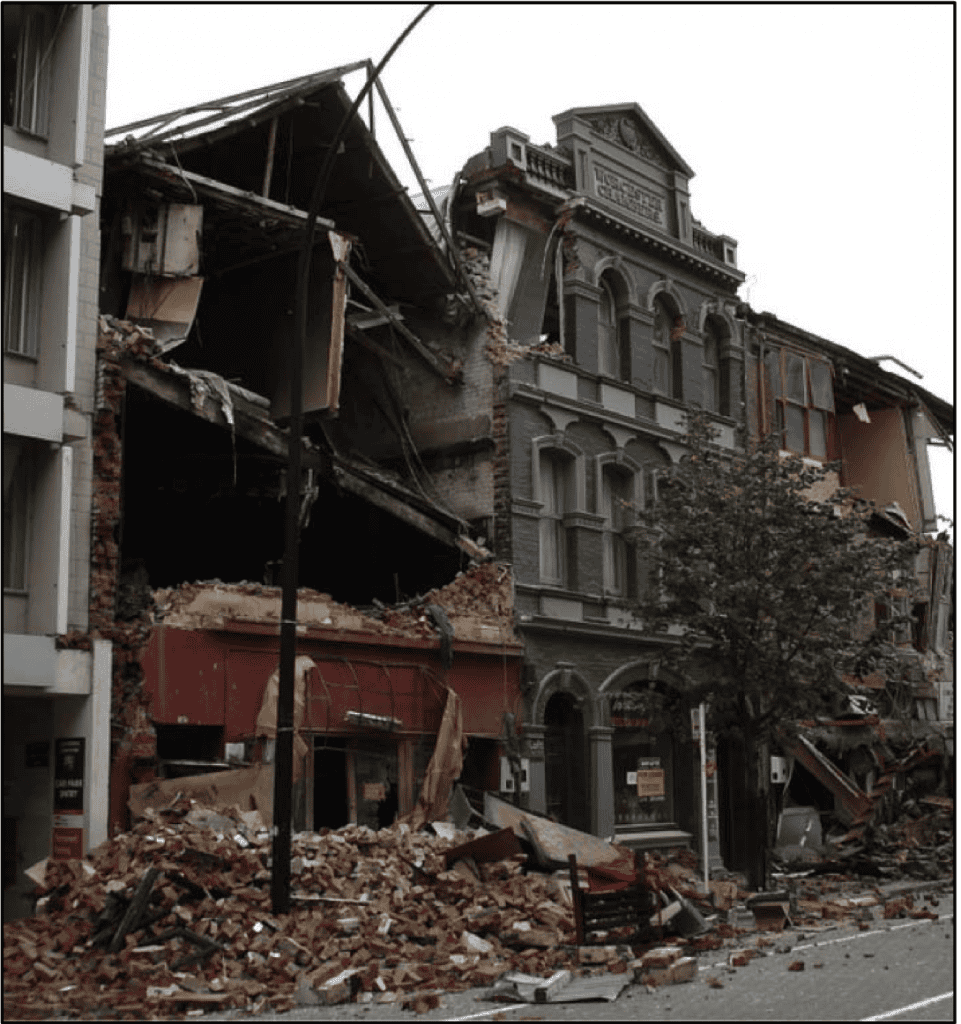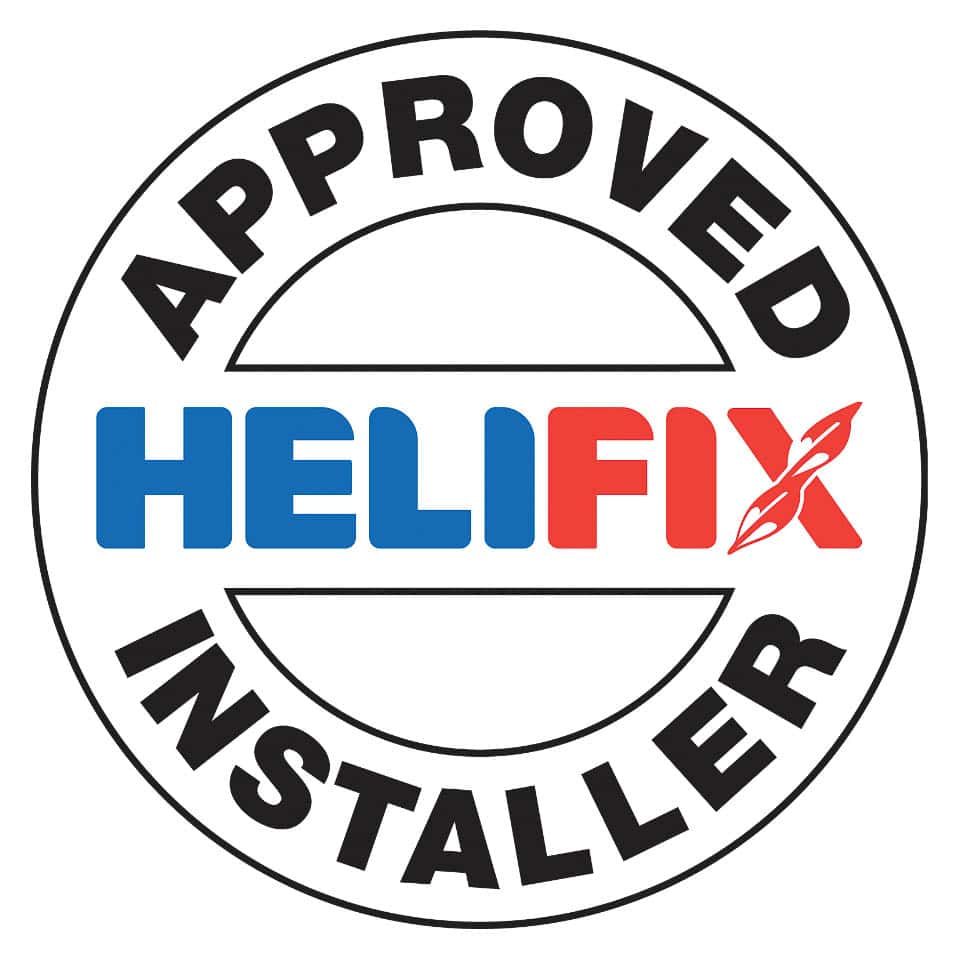Retrofit helical wall ties and reinforcements for seismic upgrades
The recent earthquakes in Victoria were a reminder that although Australia’s tectonic plate is mostly stable and its border with the Antarctic, Pacific and Indian plates lie far out to sea the build up of forces underneath Australia’s land mass cause earthquakes. Intraplate events may occur less frequently but can produce powerful and sometimes destructive forces in places less accustomed to earthquakes, like east coast and central Australia (Newcastle 1989, Kalgoorlie 2010). Helitec Structural Services are experts in safeguarding buildings from earthquake damage. Our cost effective means of maintaining and upgradings buildings to better withstand seismic activity is derived from using only the Helifix range of remedial ties, fixings and reinforcements.
Our on-site experience combined with the tested and proven Helifix retrofit masonry remedial systems ensures you have the the best defences available in safeguarding buildings from earthquake damage. If your building is aged, weathered or has damaged masonry contact our friendly team for a free appraisal on how to restore the structural integrity of your building.
Many buildings along the east coast of Australia also suffer the effects of strong winds. Combined with failing wall ties or fixings that connect outer leaf masonry façades to inner leave masonry walls or structural frames, roof and floor joists the result of these strong wind forces can be catastrophic .


Building Maintenance
Building maintenance is important because earthquakes exacerbate any pre-existing weaknesses caused by age, weathering or previous low level seismic activity. Cracked and unsecured masonry features, and masonry façades secured by corroded or inadequate wall tie systems, are hazards where inaction can add significantly to the seismic risk. Earthquakes also magnify inherent inadequacies or faults in a building’s original design and construction. Older, unreinforced masonry (URM) buildings, built to different standards are particularly vulnerable to seismic activity and in these cases adding strength and ductility may be essential to improve safety.
Helitec Structural Services are approved Helifix Installers. Over many years we have have been a leader in retrofitting buildings with Helifix structural strengthening remedial systems to the highest quality. Helifix retrofit systems are now being extensively used in seismic areas to add strength and ductility to masonry elements when upgrading vulnerable buildings. Seismically upgrading buildings is important both safety and practical reasons. Earthquakes cause major disruption and can lead top loss off life. We can safeguard buildings from earthquake damage with a low cost and minimal disruption to occupants.
Earthquakes and Older Masonry Buildings
Older masonry buildings are susceptible to earthquake damage. As a popular and well-established construction material worldwide, it is estimated that masonry collapse has been one of the main causes of earthquake-related fatality over the last century but it is neither feasible nor desirable to attempt to replace all masonry buildings with modern ‘resistant’ structures. As a minimum it is important that masonry buildings are properly maintained and upgraded wherever possible so that they might better withstand seismic action. Contact our friendly team to learn how Helitec Structural Services can
Geoscience Australia develops the National Seismic Hazard Assessment (NSHA) for Australia. The NSHA defines the level of earthquake ground shaking across Australia that has a likelihood of being exceeded in a given time period. Knowing how the ground-shaking hazard varies across Australia allows higher hazard areas to be identified for the development of mitigation strategies so communities can be more resilient to earthquake events.
The February 2011 Christchurch NZ earthquake highlighted that an earthquake, even of relatively moderate magnitude, may produce extreme ground accelerations and devastating consequences as a result of unpredictable factors including focal depth and proximity to urban centres. Regulations are being updated in many urban areas to reflect changing perceptions of seismic risk. In the past few years building codes and seismic hazard maps have updated. New seismic maps have been produced for Australia[5], Europe[6] and other regions of the world, and seismic design guides are under review.As a popular and well-established construction material worldwide, it is estimated that masonry collapse has been one of the main causes of earthquake-related fatality over the last century[7] but it is neither feasible nor desirable to attempt to replace all masonry buildings with modern ‘resistant’ structures. As a minimum it is important that masonry buildings are properly maintained and upgraded wherever possible so that they might better withstand seismic action.

Seismic Upgrade Techniques
Seismic upgrade techniques for masonry buildings include:
• Connecting all the structural elements so the building acts as a cohesive unit
• Increasing the strength of masonry components and features through the installation of reinforcing elements
• Installing elements intended to prolong the onset of failure through improved ductility
• Introducing new structural members e.g. concrete, timber or steel frames to resist seismic activity and provide additional support to vulnerable elements
Helifix retrofit systems work effectively with all of these techniques. Stainless steel ties and reinforcements can be retrofitted easily using concealed installation procedures. They are reliable, one-piece products that do not add to building seismic weight and are manufactured to exacting, ISO quality controlled standards.

Visit our news pages to learn more about reinforcing your building.
